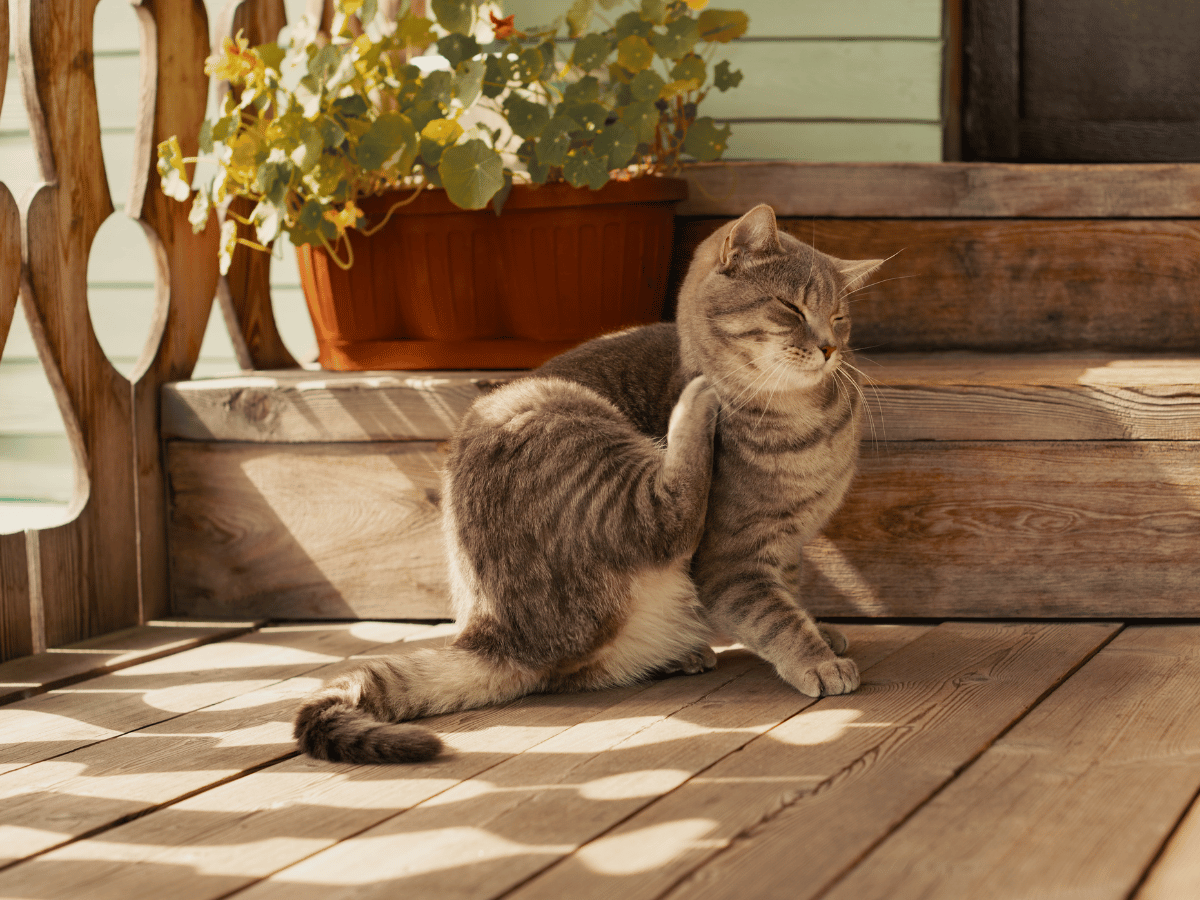
5 Best Natural Flea Treatments for Your Cat: Get Rid of These Pests! 2025
If you're reading this, chances are you've noticed your beloved cat scratching more than usual, and you've wondered: Could it be fleas? If so, is it serious?
It's a concern that many of us cat owners share at some point, as fleas are not only common, but can cause significant discomfort and health problems for our four-legged friends.
At HomeoAnimo, we understand this concern. For years, we've been dedicated to providing pet owners with practical advice and natural remedies.
- Click to learn more: 👉 NATURAL support for your cat infested with FLEAs. 🐈
Before exploring natural treatments for fleas in cats in more detail, it is crucial to understand exactly what we are dealing with.
What are fleas and how do they affect our cats?
Let's dive into the next section to unravel the basics of flea infestations.
What are fleas in cats?
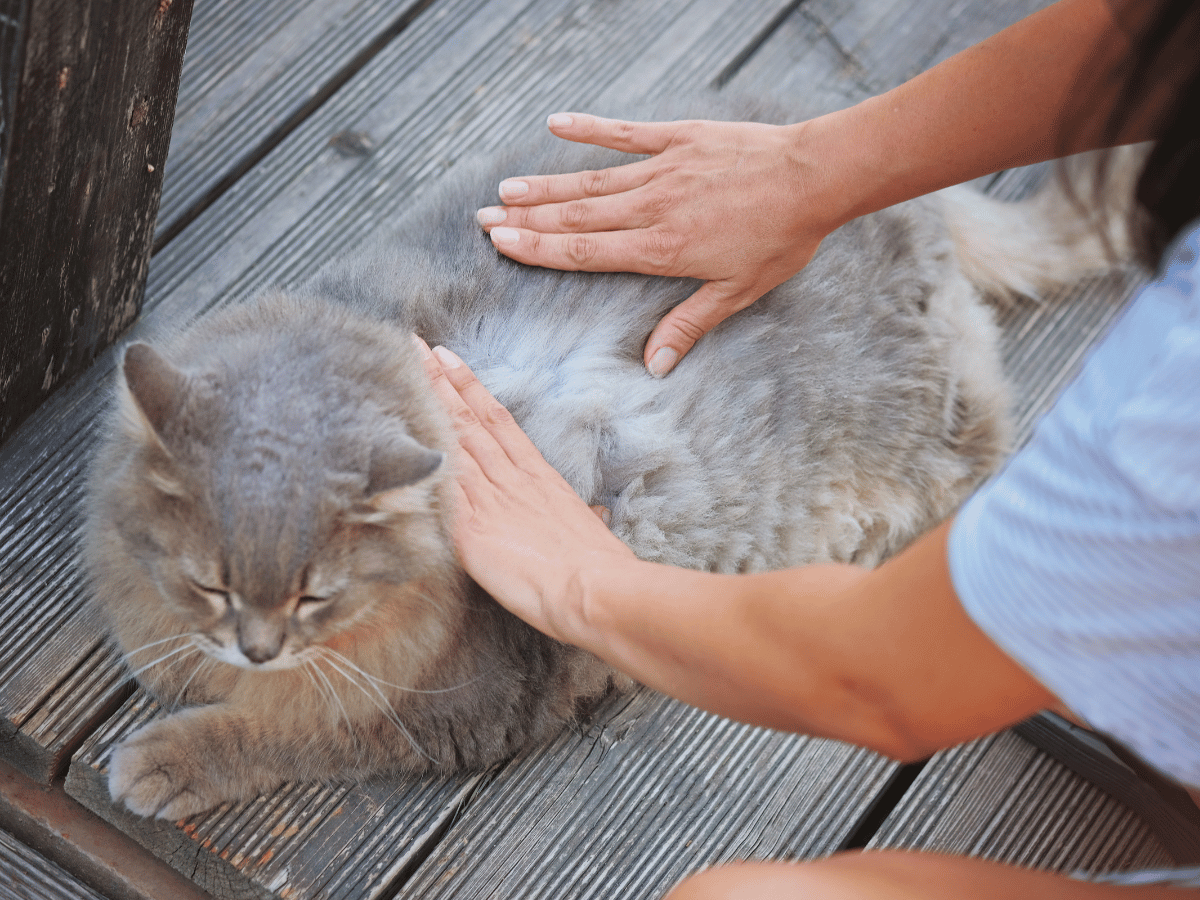
Fleas are small external parasitic insects that feed on the blood of their host.
There are over 2,200 recognized flea species worldwide. Among the most common flea species are the cat flea (Ctenocephalides felis) and the dog flea (Ctenocephalides canis). However, the majority of fleas found on both dogs and cats are cat fleas.
What does a cat flea look like?
It is important to be able to identify these parasites. Fleas are small, flat, wingless insects with three pairs of legs.
A cat flea, through a photo, may seem tiny, but in reality, its size usually ranges from 1 to 3 mm, which makes them visible to the naked eye.
PHOTO of a flea on a cat

The life cycle of a flea includes eggs, larvae, pupae, and finally the adult, which is the cause of discomfort for your cat.

PHOTO of a flea egg

Where is the chip located on a cat?
Fleas often nest in warm, protected areas of the cat's body, such as the neck, behind the ears, and under the belly .
Understanding where a cat's flea is located can help you act quickly and prevent a larger infestation.
In addition to causing constant itching, fleas excrete feces, which can also be spotted if you know where to look. Flea droppings are usually visible as small black spots on your cat's skin or fur, as well as in their living environment.
Flea eggs, however, are harder to see because they are very small and are deposited in the environment rather than on the animal itself.
An important step in protecting your cat from these unwanted parasites is to quickly recognize the signs and symptoms of them in cats.
What are the symptoms of fleas in cats?

Symptoms of fleas in cats can vary, but some distinctive signs include the presence of flea bumps, bites, and scabs on your beloved feline companion's skin , which usually results in hair loss and itching .
How do you know if a cat has a flea?
Cats infested with fleas may exhibit excessive scratching and licking behavior, particularly around the neck, back, and hips.
This is due to irritation from flea bites, which can also leave behind small red bumps or scabs due to allergic reactions to flea saliva.
How can a cat get fleas?
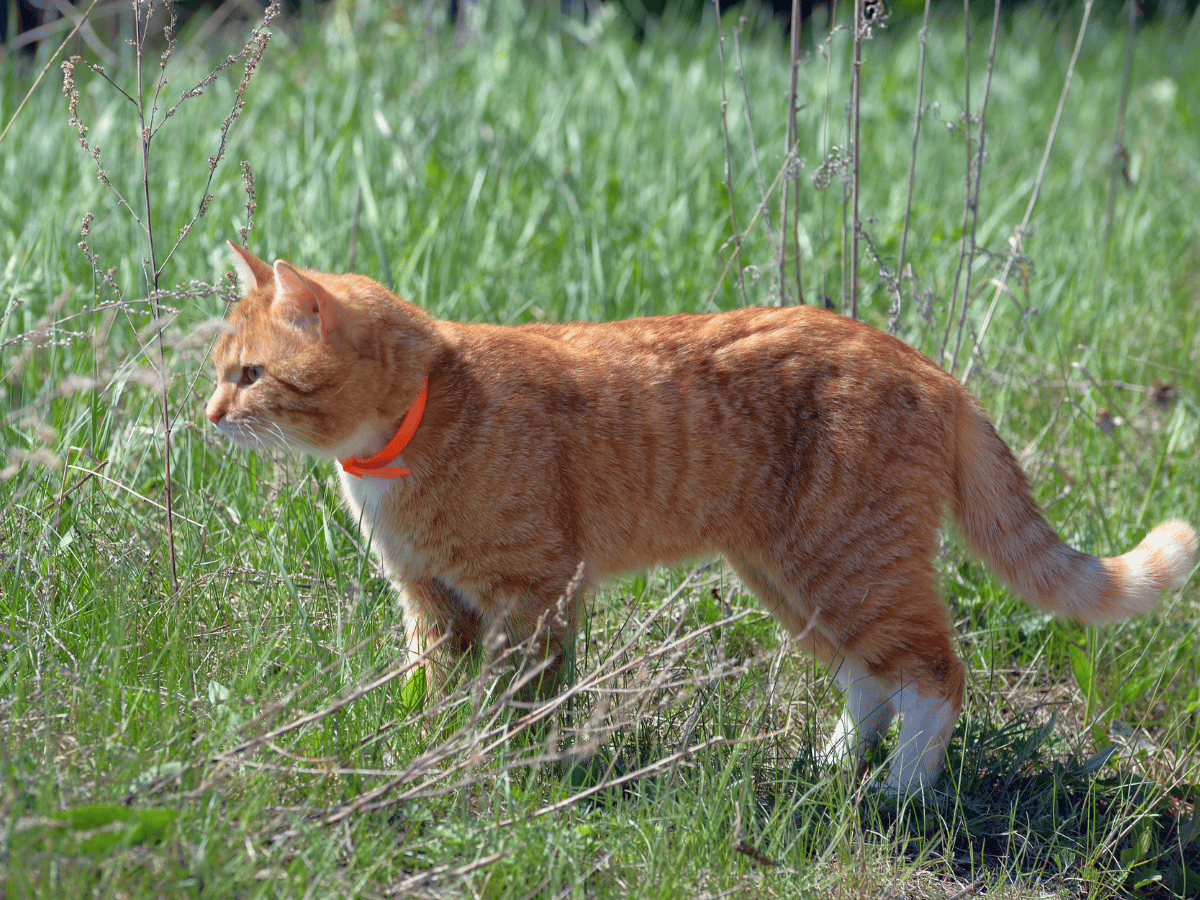
It is quite common for a cat to catch fleas, especially if it explores outdoors or coexists with other animals that go outside.
Fleas can jump from one host to another with disconcerting ease, meaning that a cat can become infested simply by being in the same environment as an already infested animal.
Additionally, fleas can survive in a cat's environment – on bedding, carpets, and furniture – before finding their way onto your pet.
But my cat stays indoors, can he still get fleas?
Even indoor cats are not immune , as we can unknowingly bring fleas inside on our clothes or shoes.
What conventional treatments are available in pharmacies for fleas in cats?
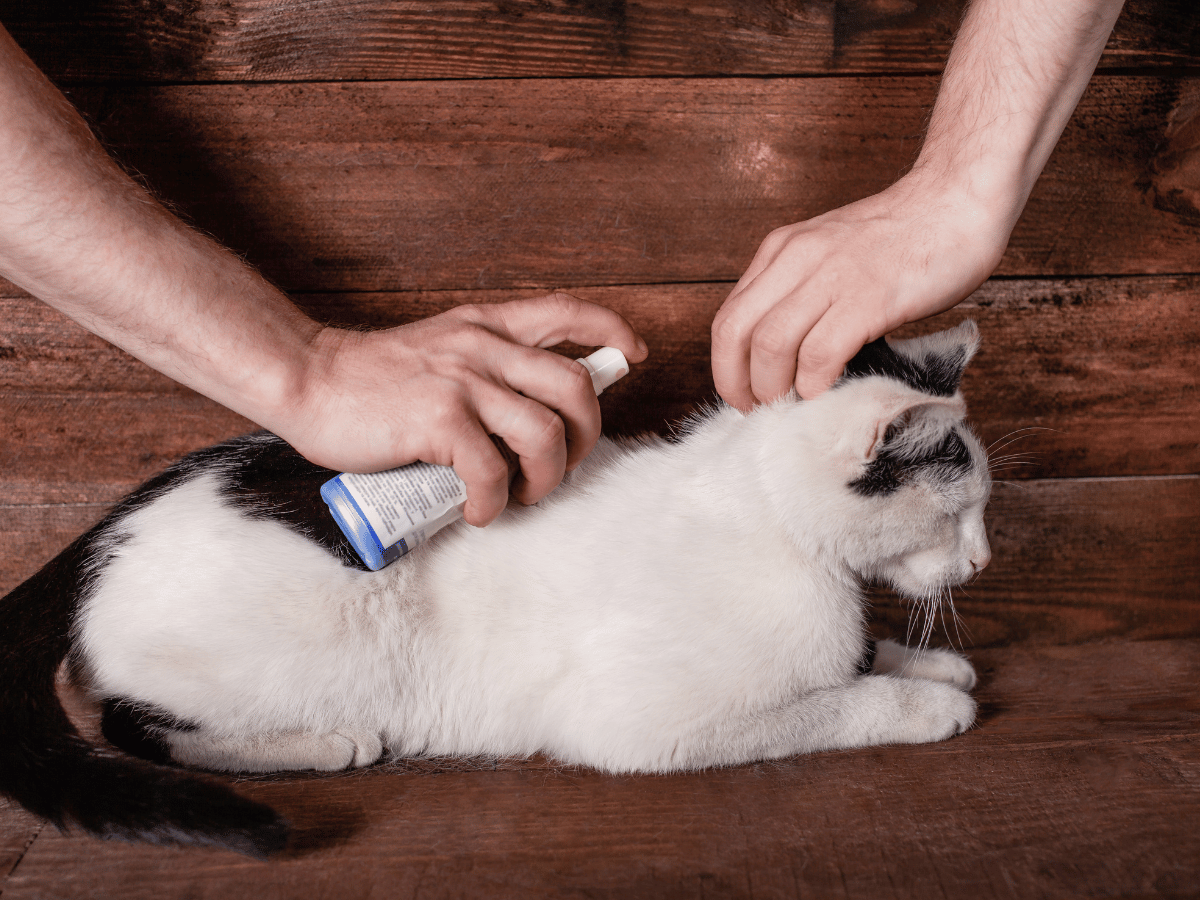
Conventional flea treatments available at pharmacies vary in type, effectiveness, and price. They include droppers, collars, sprays, and combs, among others.
Flea droppers , applied along the cat's back, begin working quickly to kill adult fleas and prevent an infestation.
It is essential to apply a flea dropper correctly to ensure maximum effectiveness and to observe your cat carefully for any reactions, particularly if it scratches after applying a flea repellent, which may indicate a skin reaction requiring veterinary attention.
How long between 2 anti-flea pipettes?
Generally, it is recommended to wait four weeks between applications to maintain effective protection.
For those looking for longer-lasting protection, which can reduce treatment costs, flea collars offer several months of flea protection.
Flea sprays and flea combs are also immediate options for relieving your cat, the former by killing fleas on contact and the latter by physically removing them from the animal's fur.
When it comes to your cat's overall health, it is often recommended to use a dewormer at the same time as or after flea treatment, to ensure your cat is protected against internal as well as external parasites.
What are the natural treatments for fleas in cats?

Using natural products such as vinegar, lemon, baking soda, essential oils (especially lavender) or even diatomaceous earth is an effective solution for getting rid of fleas naturally.
Faced with a flea infestation in cats, many owners turn to natural treatments to relieve their companion.
This experience of a cat owner we helped testifies to this:
With five cats, managing flea infestations was daunting for her! She says the natural remedy we recommended saved her a lot of stress and unnecessary vet visits. Learn more about this natural remedy for fleas in cats below.
How to make homemade flea repellent?
1) Vinegar
Vinegar, especially apple cider vinegar, can be used in a diluted solution (one part vinegar to two parts water) to create a cat body spray. Its acidity helps repel fleas.
2) Lemon
Lemon contains limonene, a natural flea repellent. Some even believe that the active ingredients in lemon may kill fleas .
To use lemon as a natural flea treatment for cats, prepare an infusion by heating water with lemon slices for a few hours. Once cooled, apply this home remedy for fleas to your cat's fur.
3) Baking soda
Baking soda can be sprinkled directly onto your cat's fur or bedding to help kill fleas by dehydration. Be sure to brush your cat thoroughly after application to remove dead fleas.
4) Essential oils
Essential oils, such as lavender , should be used with caution and always diluted as they can be toxic to cats if used improperly. However, when properly diluted, they can offer protection against fleas.
For example, a mixture of water, lavender essential oil, and vinegar can be an effective natural flea repellent.
5) Diatomaceous earth
According to the National Pesticide Information Center (NPIC), diatomaceous earth "causes insects to desiccate and die by absorbing oils and fats from the cuticle of the insect's exoskeleton."
To use diatomaceous earth as a natural flea treatment for cats, sprinkle a thin layer onto your cat's coat, massaging gently against the grain to ensure even distribution throughout the coat.
Be sure to use only food-grade diatomaceous earth (not swimming pool diatomaceous earth, which is toxic) and keep it away from your cat's nose, as it can irritate the respiratory tract.
Now, read on to discover our favorite natural remedy for fleas on cats.
A natural homeopathic solution
 TP Animo (Ticks & Fleas) homeopathic remedy is designed to maintain the well-being of cats and dogs. It also helps prevent tick and flea infections (dogs, cats, horses, and pets).
TP Animo (Ticks & Fleas) homeopathic remedy is designed to maintain the well-being of cats and dogs. It also helps prevent tick and flea infections (dogs, cats, horses, and pets).
This premium 100% natural remedy relieves symptoms due to tick and flea bites and prevents tick and flea bites.
Watch our videos:
How to prevent a flea infestation in cats?

Preventing a flea infestation in cats begins with a proactive approach, from regular cleaning to examining your cat's coat.
What are the best strategies to prevent fleas in our feline friends?
Here are some key steps you can take to protect your pet:
-
Regular Cleaning : Make sure to frequently clean your cat's living areas, including beds, blankets, and favorite resting spots.
-
Preventative Treatments : Use cat-specific preventative products recommended by a veterinarian to repel fleas before they infest your pet.
-
Regular coat inspection : Regularly inspect your cat's coat for fleas or their droppings, especially after outdoor activities.
-
Thorough hygiene : Wash your cat's linens and toys at a high temperature to kill fleas or their eggs.
-
Veterinary Consultation : Visit your veterinarian for a personalized check-up and advice on flea prevention.
-
Education and Awareness : Learn about the flea life cycle and different preventative methods to stay several steps ahead.
- Avoid contact with infested animals : Limit your cat's exposure to other animals that may be carrying fleas. Interactions with untreated animals can pose a risk of infestation.
By adopting a comprehensive prevention strategy, you not only help ensure the health and well-being of your feline companion, but you also avoid the inconvenience and unnecessary expense of treating infestations.
What should I do if my cat develops a flea bite allergy?

If your cat develops a flea bite allergy, the first step is to consult a veterinarian for diagnosis and appropriate treatment.
Allergic reactions can manifest as intense itching, redness, hair loss, or even skin lesions, significantly impacting your pet's well-being.
The veterinarian may prescribe medications to relieve allergy symptoms, such as antihistamines or corticosteroids.
Additionally, talk to your veterinarian about dietary measures or supplements that can strengthen your cat's skin and immune system, providing additional protection against allergic reactions.
For particularly susceptible cats, it may be beneficial to adopt flea prevention methods on a regular basis, even outside of typical infestation seasons.
How do I remove a flea from my cat?
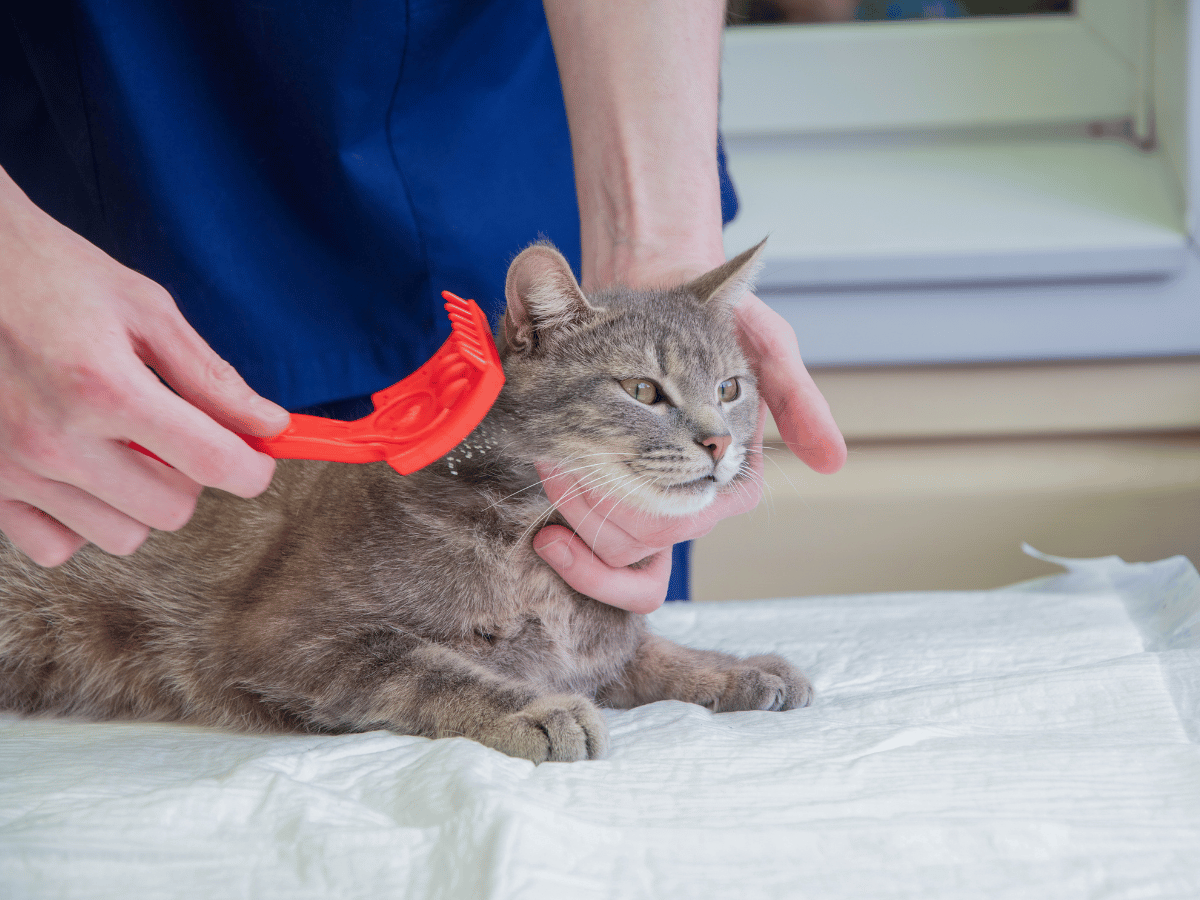
Removing a chip from your cat requires care and attention.
The first step is to use a flea comb specially designed to capture and remove fleas from your pet's fur.
Make sure to comb all of the fur, paying special attention to sensitive areas like the neck and base of the tail. After each stroke, clean the comb in a soap and water solution to kill fleas.
In case of severe infestation, it is recommended to consult a veterinarian who can suggest more powerful treatments, such as oral or topical medications.
Can fleas kill a cat?
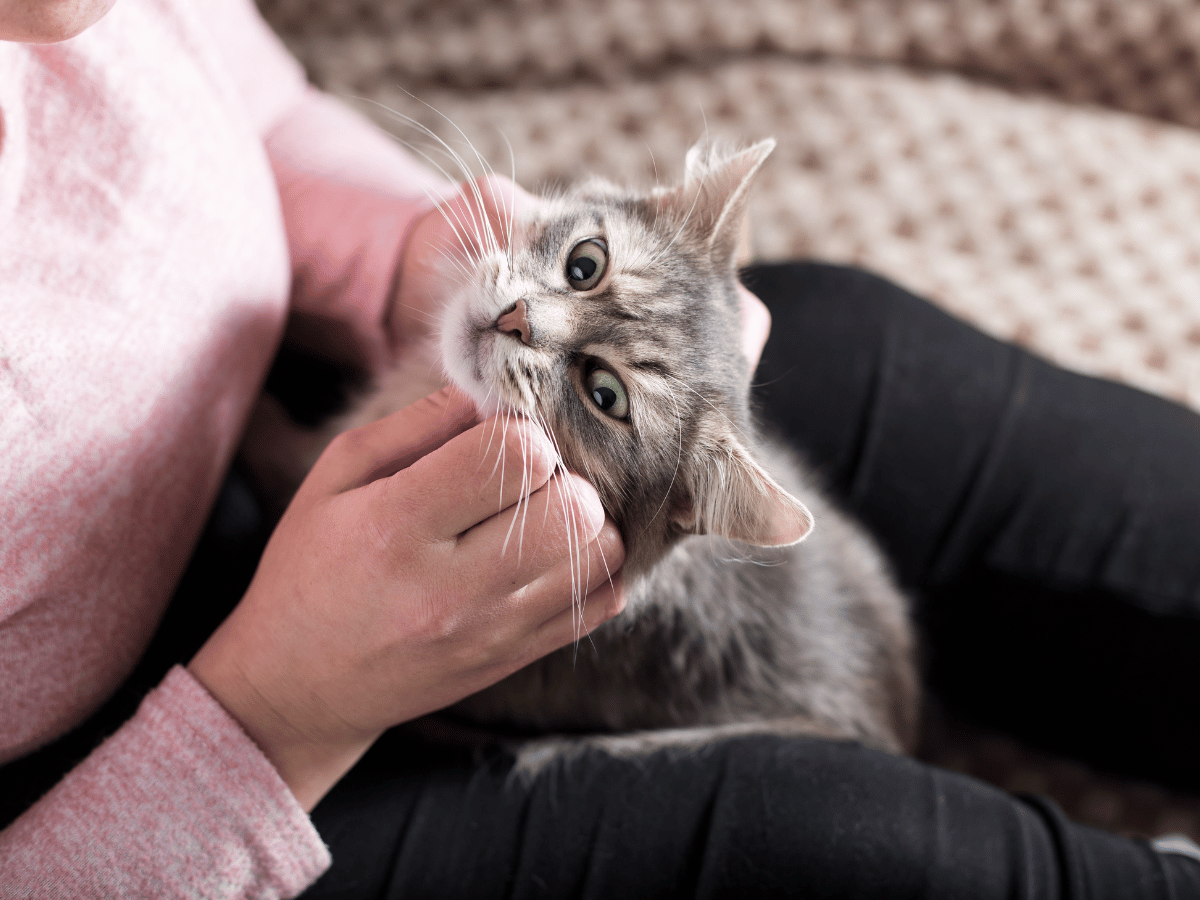
Although rare, cases where fleas can cause the death of a cat are not impossible.
The main threat comes from the severe anemia that can result from massive flea infestations, particularly in kittens, older cats, or those already in fragile health.
Fleas feed on the animal's blood, and an uncontrolled infestation can therefore significantly reduce blood volume , putting the cat's life in danger.
In addition to anemia, fleas can also carry various diseases and parasites , which can further complicate your cat's health.
Are cat fleas transmissible to humans?

Fleas that infest cats can, in fact, bite humans and cause discomfort.
Although they do not live on humans as they do on animals, flea bites can cause itching, redness, and sometimes allergic reactions in some people.
These parasites are blood-seeking parasites and although they prefer animal blood, they can bite humans when an infested animal shares the same living environment.
How can I effectively eliminate fleas inside my home?
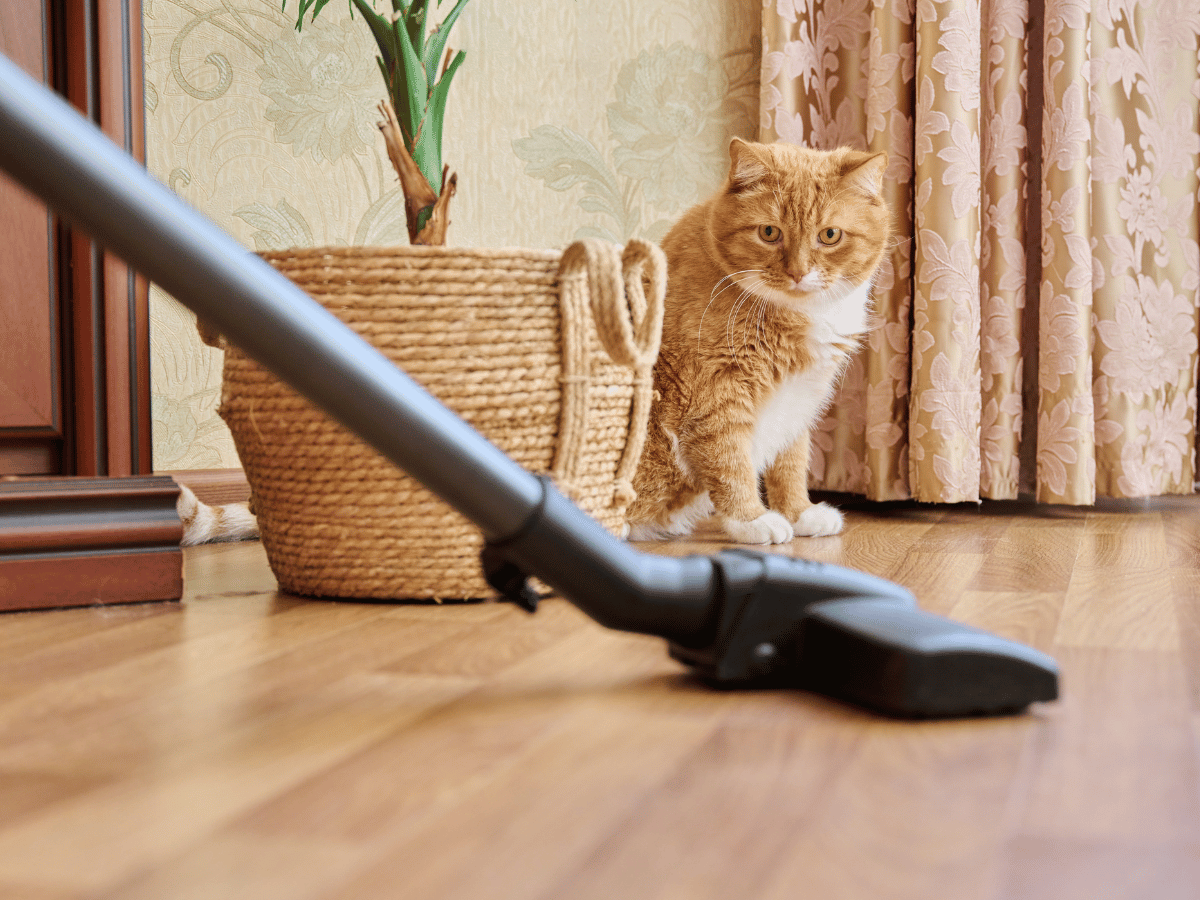
To effectively eliminate fleas inside your home, using black soap and a vacuum cleaner together is a particularly effective method.
How to use black soap and a vacuum cleaner to combat a flea infestation?
Black soap, thanks to its natural insecticidal properties, can be used to clean floors, carpets and furniture.
Dilute black soap in hot water and use this solution to wash surfaces where fleas are likely to hide.
This method not only cleans but also kills fleas thanks to the properties of black soap.
At the same time, a vacuum cleaner is an invaluable tool in the fight against fleas. It effectively removes adult fleas, their eggs, and larvae from carpets, upholstered furniture, and even cracks in hardwood floors.
After each use of the vacuum cleaner, it is essential to immediately dispose of the bag or clean the dust compartment to prevent fleas from escaping.
These methods not only help eliminate fleas, but they also help prevent future infestations, making your home safe and comfortable for you and your pets again.
What is the difference between fleas, lice, and ticks in cats?
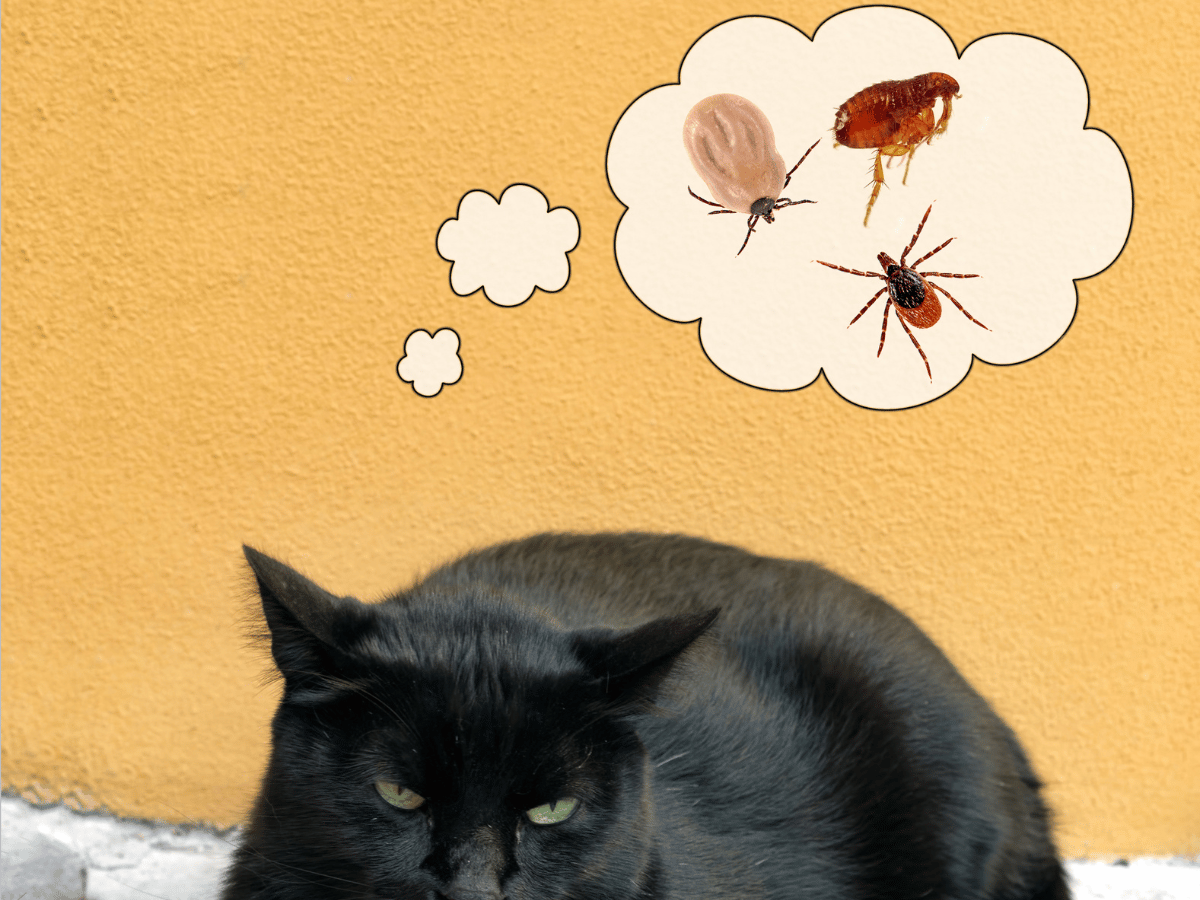
Understanding the difference between fleas , lice , and ticks is important for your cat's well-being, as these three parasites require different approaches to prevention and treatment. They differ in appearance and lifestyle.
As mentioned in this article, fleas are small parasitic insects that feed on the host's blood and are capable of causing intense itching, anemia, and even transmitting diseases.
Lice , on the other hand, are also parasites, but unlike fleas, they remain constantly on their host throughout their life cycle and can cause severe skin irritations.
Ticks are arachnids that attach to an animal's skin to feed on its blood. They can transmit a variety of serious diseases, including Lyme disease.
Conclusion
Throughout this article, we've discussed the dangers fleas pose to our feline friends and shared our effective natural remedies for treating fleas in cats.
If you are interested in using TP Animo (Ticks & Fleas) product, we encourage you to contact us to learn more about this natural remedy.
Have you ever experienced a flea infestation on your cat? Share your experience in the comments.
Wondering how to keep your pet healthy naturally? We invite you to take advantage of our Free Pet Health Referral service. Our personalized service offers a solution tailored to your situation, promising concrete results for your pet's well-being. It's free, tailored to your needs, and a step toward a healthier life for your four-legged friend.





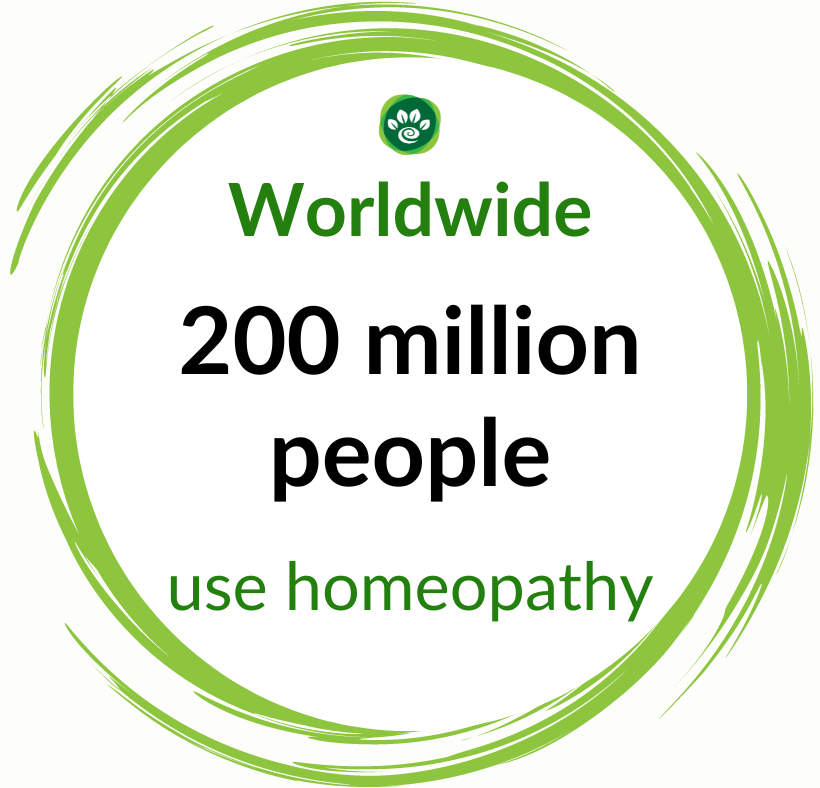
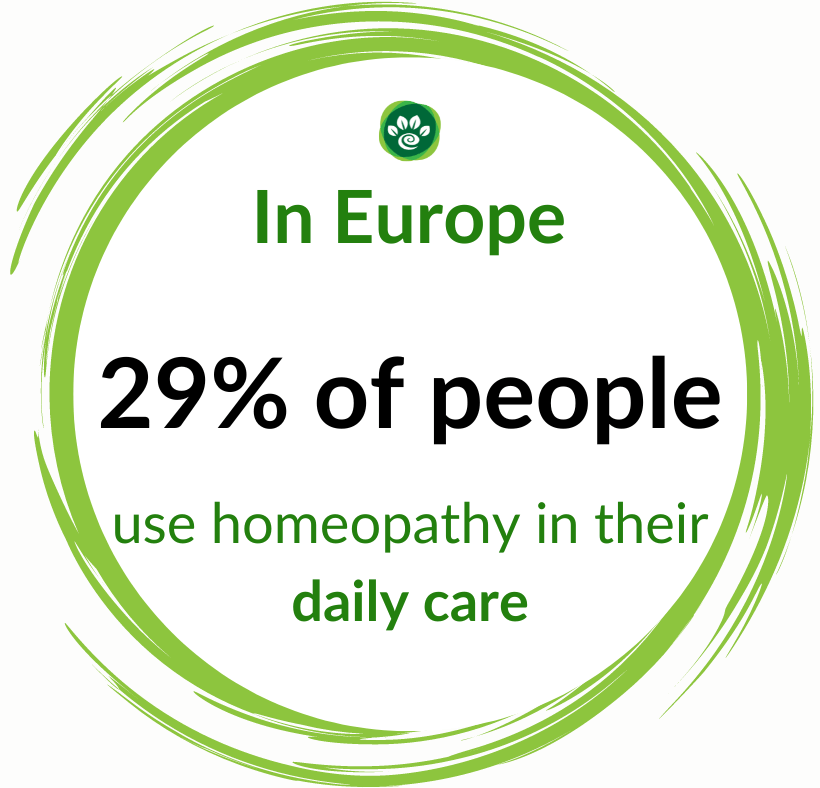
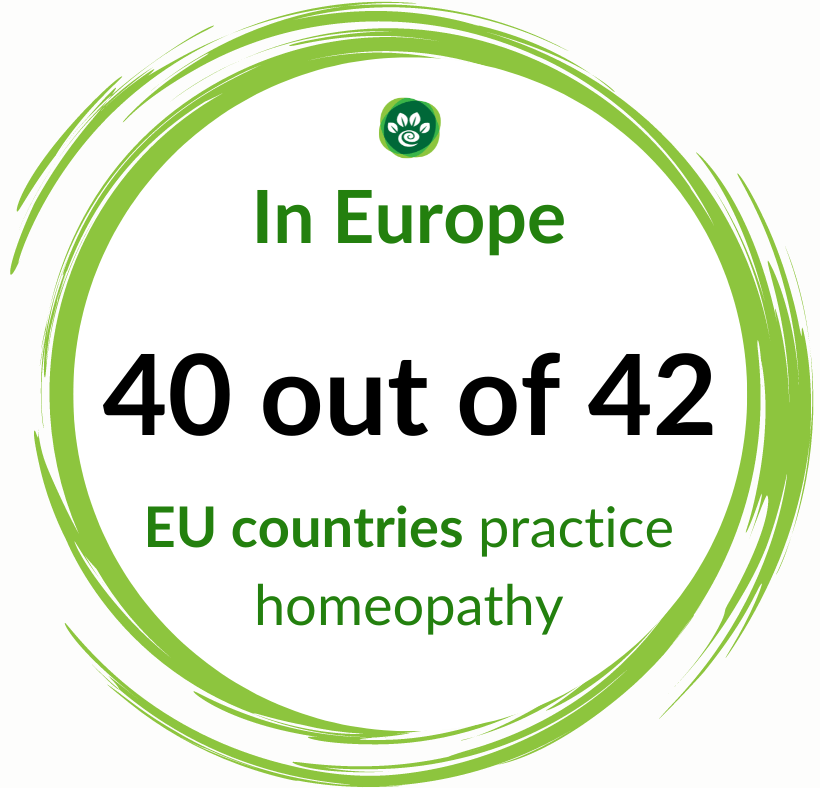
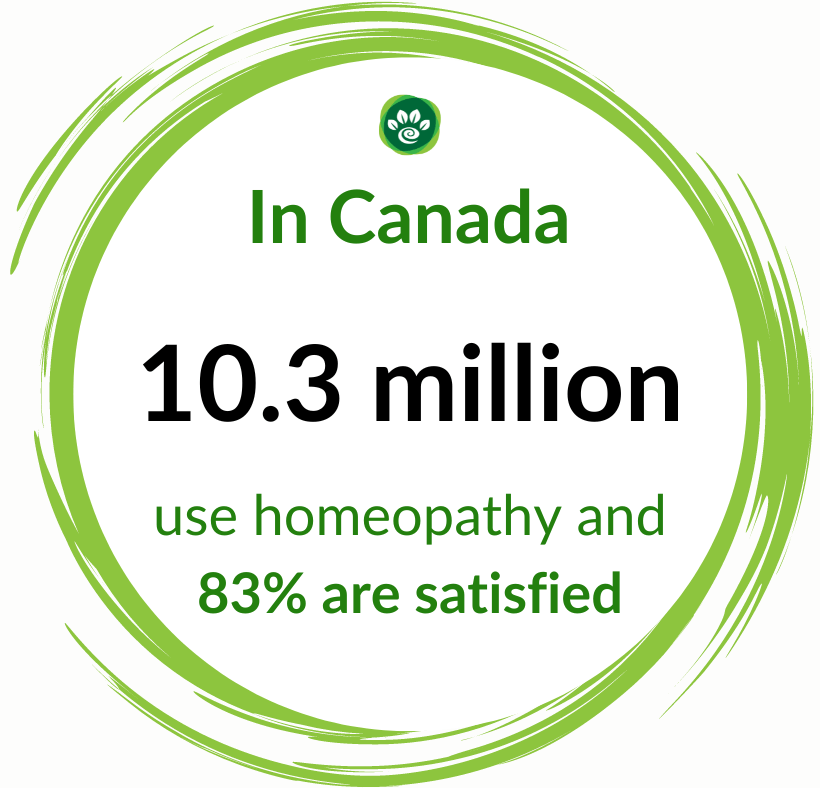
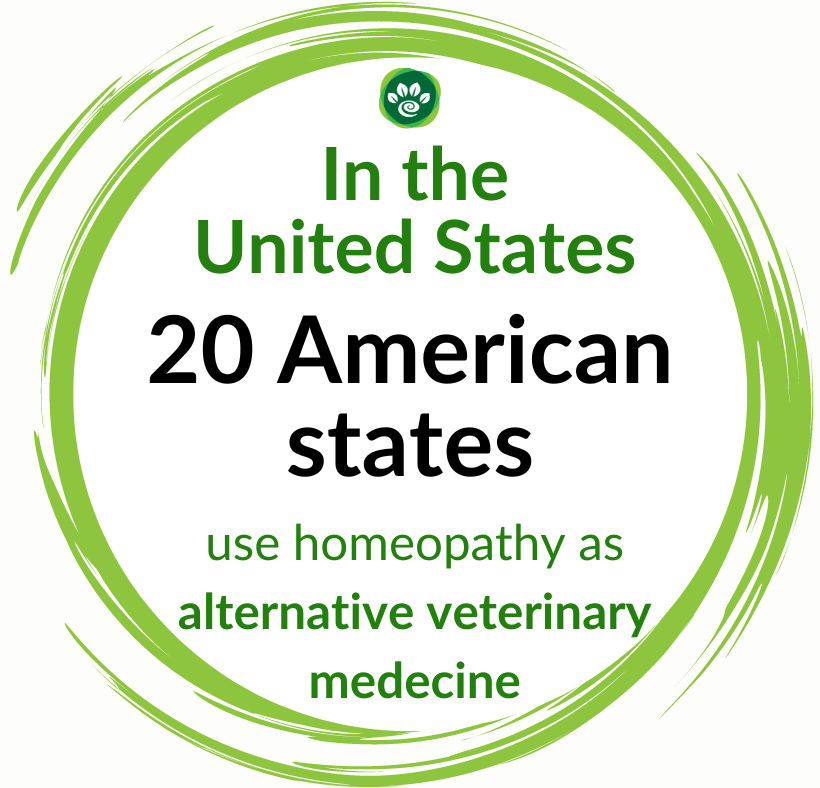










2 comments
Bonjour Eliane. Merci de nous avoir contactés au sujet de votre chat. Nous allons vous envoyer un email pour vous aider. A très vite !
HomeoAnimo
Merci pour tous ces conseils que je vais appliquer sur mon chat de un an qui etait infesté de puces ,retrait au peigne de 30 puces
Traite par le vétérinaire avec ‘un cachet dont je ne sais plus le nom. Le lendemain mon chat était malade yeux collés plus aucun tonus n’a pas voulu prendre le cachet vermifuge écrasé dans du thon . Il commence a aller mieux après une semaine mais a des mouvements bizarres secoue ses pattes avant et arrière frénétiquement… J’aimerais un conseil. Je suis près de Besançon. Connaissez vous un vétérinaire homéopathe ? Merci d’avance. Si possible par mail bien sûr je peux aussi acheter chez vous les traitements. Eliane
COLMAR ELIANE
Leave a comment
This site is protected by hCaptcha and the hCaptcha Privacy Policy and Terms of Service apply.